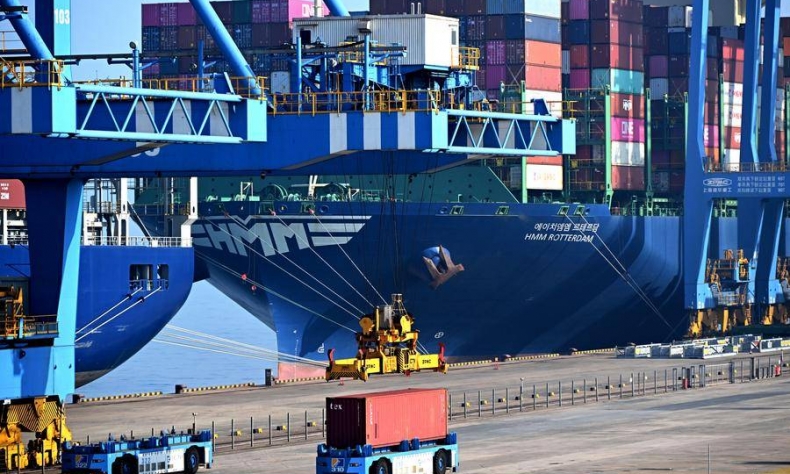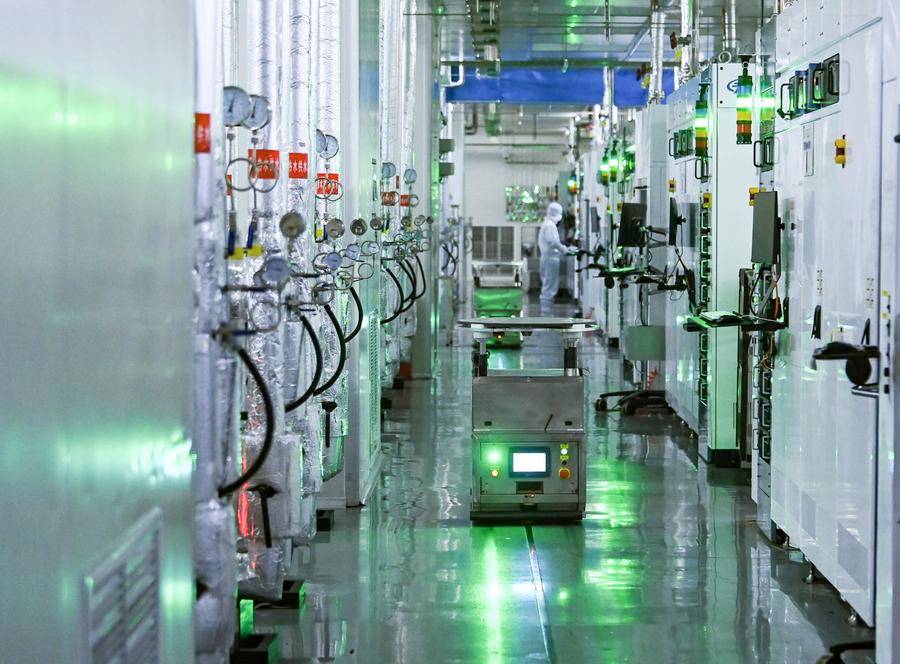Buoyed Confidence Underscores China’s Robust Economy

China’s huge market potential, rapid growth of new types of consumption, applications of new technology, and supportive policies, all bolster global confidence in the world’s second largest economy.
Recently released economic data reflecting China’s brisk economic activities and vibrant foreign trade attest to a steady acceleration in the country’s economic growth. The National Bureau of Statistics (NBS) reported year-on-year growth in the first two months of 2024 of 5.5 percent for retail sales of consumer goods, 4.2 percent for fixed-asset investment, and 7 percent for value-added of the industrial enterprises above the designated size. The country’s total import and export of goods, meanwhile, expanded 8.7 percent year-on-year , and its volume for this period achieved a historical high of RMB 6.61 trillion.
This uplifting start to the year signifies a smooth course for Chinese economy toward its 2024 growth target of around five percent. Economists ascribe this impressive performance to China’s huge market potential, rapid growth of new types of consumption, applications of new technology, and supportive policies, all of which bolster global confidence in the world’s second largest economy.
Such convincing testimony to China’s burgeoning economy notwithstanding, Western media’s anti-China rhetoric has nonetheless spouted dire predictions of the Chinese economy’s imminent “peak” – and indeed of the country’s “collapse.” But as senior fellow at the Chongyang Institute for Financial Studies of the Renmin University of China John Ross observed in his signed article published by Xinhua, “… you have to distinguish what the people in the West think and what various media and governments in the West think.” In 2023, the Chinese economy grew 5.2 percent, as compared to a 2.5 percent increase in the U.S.’s economy. Yet this disparity did nothing to dampen the U.S. media’s hyping up of China’s so-called “crisis,” and inexplicable assertion, which the facts overwhelmingly refute, that “the U.S. economy is doing incredibly well.”
Chinese Premier Li Qiang laid out in this year’s government work report a series of key tasks for 2024. These include modernizing the industrial system, and more rapid development of new quality productive forces; expanding domestic demand, and promoting sound economic flows; deepened reform and greater internal development momentum, and pursuing higher-standard opening-up, among others, all of which will undoubtedly fuel China’s high-quality development.

Economists have expressed optimism in regard to China’s economic outlook. UBS economist Wang Tao commended the Chinese government for its highlighting of ongoing structural changes and outlining of certain structural policies to facilitate the transition, such as developing new quality productive forces, according to Xinhua. Liu Jing, chief economist for Greater China at HSBC, is confident that China will reach its growth target of around five percent this year. Liu said, in a Xinhua interview, “An array of favorable factors, including a stabilizing property market, recovering consumer sentiments, stronger manufacturing investments driven by massive equipment upgrades, and fiscal and monetary measures, will help promote a steady recovery of the economy.”
Meanwhile, the steady advance of high-standard opening-up has buoyed international investors’ confidence in the Chinese market. In 2023, newly established foreign-invested enterprises in China totaled 53,766 – a year-on-year increase of 39.7 percent. An American Chamber of Commerce report, released in late February, showed that the majority of the 183 companies surveyed were optimistic about the Chinese market’s growth, and that 76 percent of them plan to reinvest in China in 2024. The annual output value of the German-funded enterprise Thermofin, specializing in high-end heat exchangers, since 2018, when it set up its Chinese factory, has almost doubled every year. Integrated technological support, China’s huge market, and a superb production capacity have all contributed to the German firm’s rapid growth. Last year, Thermofin commenced its plan, with an estimated investment of RMB 155 million, to build new factories in China and make the country its Asia-Pacific regional headquarters. It is such buoyant foreign investment that underscores the country’s attraction as a top investment destination.
China is further expanding its high-standard opening-up with a view to sharing its development dividends with the rest of the world, thus promoting economic globalization. China will, according to the 2024 government work report, heighten its imports of high-quality goods, fully apply the negative list for cross-border trade in services, and abolish all market access restrictions on foreign investment in manufacturing. The country will, moreover, reduce market access restrictions in service sectors such as telecommunications and healthcare, and make it easier for foreign nationals to work, study, and travel in China.
As scientific and technological innovation becomes the major force empowering the country’s development, new productive forces come to the fore of its policymaking. In the first two months of 2024, China’s hi-tech manufacturing industrial output posted a year-on-year growth of 7.5 percent, and its output of service robots rose by 22.2 percent year-on-year. This period also saw 9.4 percent year-on-year increase in hi-tech industry investment. Tasks related to developing new quality productive forces also include improvement and upgrading of industrial and supply chains, and the cultivation of emerging and future-oriented industries, according to the government work report.
 Facebook
Facebook
 Twitter
Twitter
 Linkedin
Linkedin
 Google +
Google +










